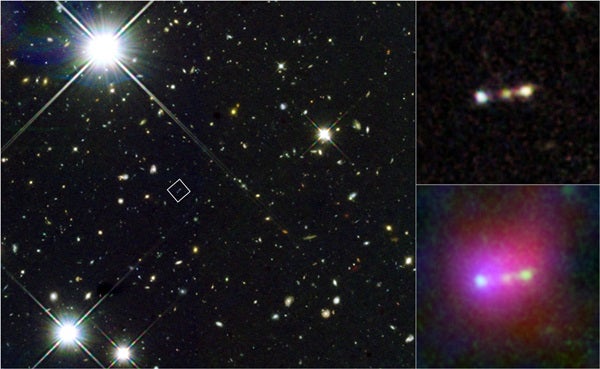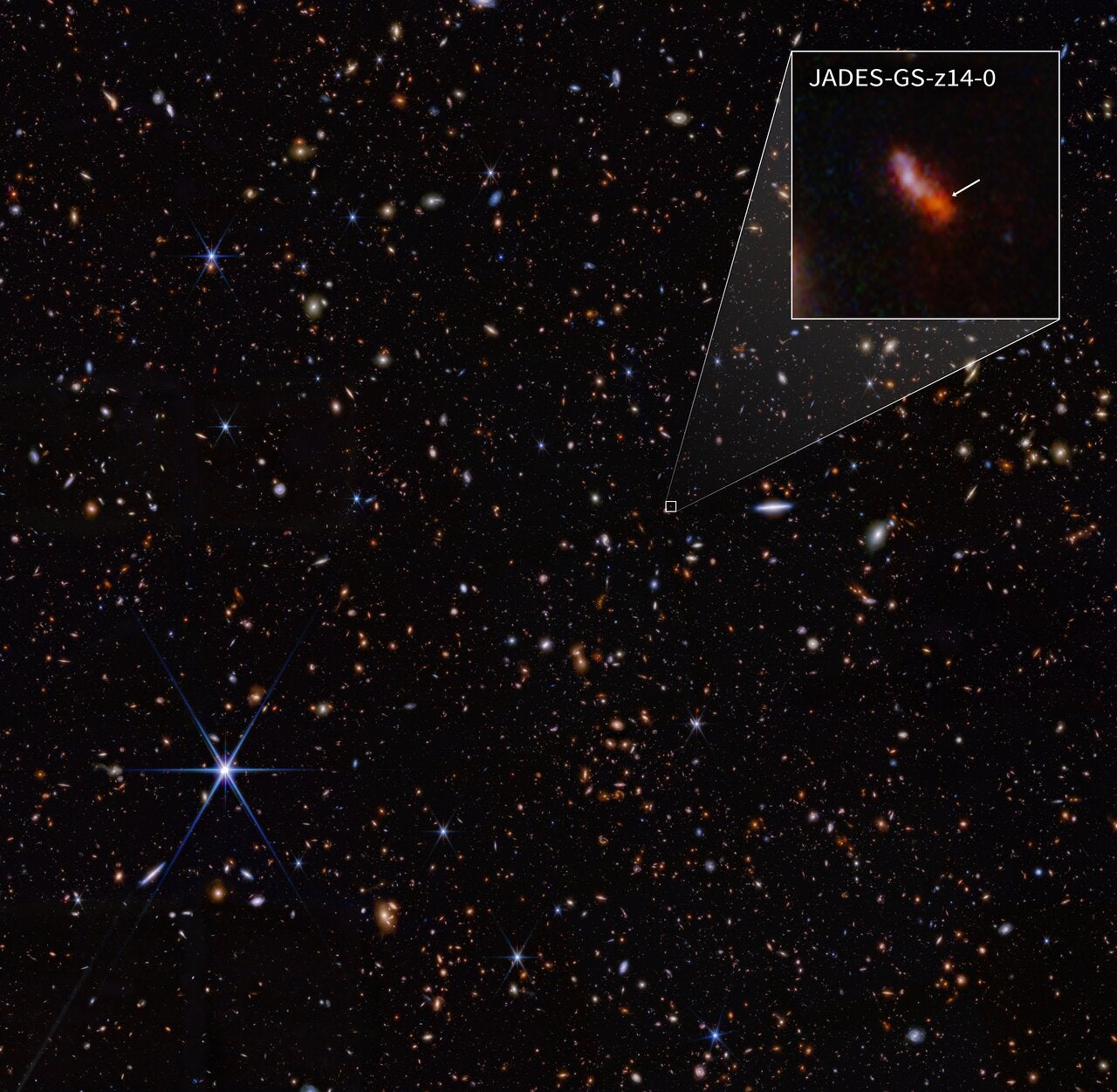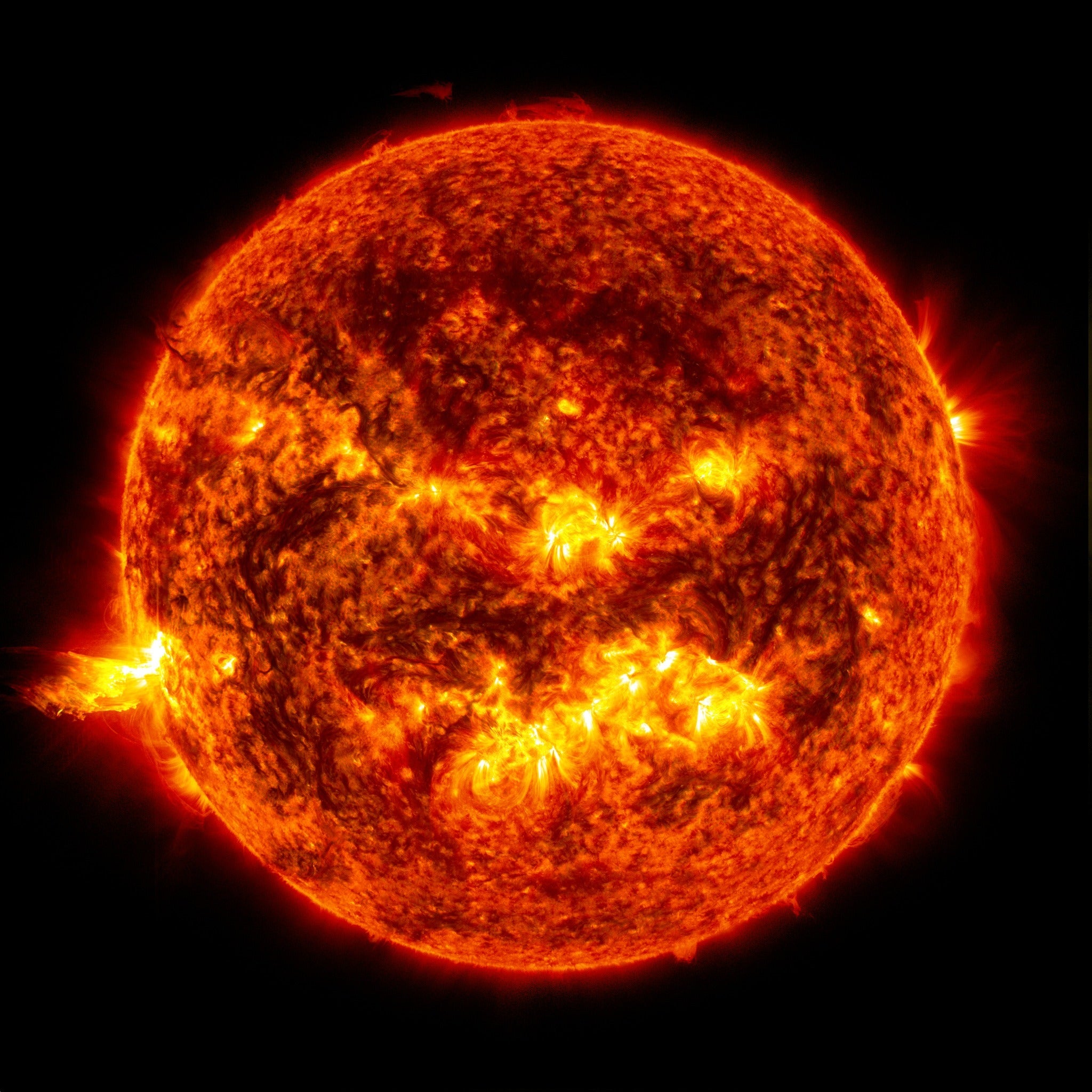“This exceedingly rare triple system, seen when the universe was only 800 million years old, provides important insights into the earliest stages of galaxy formation during a period known as ‘Cosmic Dawn,’ when the universe was first bathed in starlight,” said Richard Ellis from the California Institute of Technology in Pasadena. “Even more interesting, these galaxies appear poised to merge into a single massive galaxy, which could eventually evolve into something akin to the Milky Way.”
Researchers first detected this object, which appeared to be a giant bubble of hot ionized gas, in 2009. Dubbed Himiko (after a legendary queen of ancient Japan), it is nearly 10 times larger than typical galaxies of that era and comparable in size to our Milky Way. Subsequent observations with the Spitzer Space Telescope suggested that Himiko might represent a single galaxy, which would make it uncharacteristically massive for that period of the early universe.
“The new observations revealed that, rather than a single galaxy, Himiko harbors three distinct bright sources whose intense star formation is heating and ionizing this giant cloud of gas,” said Masami Ouchi from the University of Tokyo.
Areas of such furious star formation should be brimming with heavy elements such as carbon, silicon, and oxygen. These elements are forged in the nuclear furnaces of massive, short-lived stars like those bursting into life inside the three galaxies detected by Hubble. At the end of their relatively brief lives, these stars explode as supernovae, seeding the intergalactic medium with a fine dust of heavy elements.
“When this dust is heated by ultraviolet radiation from massive newborn stars, the dust then re-radiates at radio wavelengths,” said Kotaro Kohno also with the University of Tokyo. “Such radiation is not detected in Himiko.”
“Surprisingly, observations with ALMA revealed a complete absence of the signal from carbon, which is rapidly synthesized in young stars,” Ouchi said. “Given the sensitivity of ALMA, this is truly remarkable. Exactly how this intense activity can be reconciled with the primitive chemical composition of Himiko is quite puzzling.”
The astronomers speculate that a large fraction of the gas in Himiko could be primordial, a mixture of the light elements hydrogen and helium, which were created in the Big Bang. If correct, this would be a landmark discovery signaling the detection of a primordial galaxy seen during its formation.
“Astronomers are usually excited when a signal from an object is detected,” said Ellis. “But, in this case, it’s the absence of a signal from heavy elements that is the most exciting result!”










